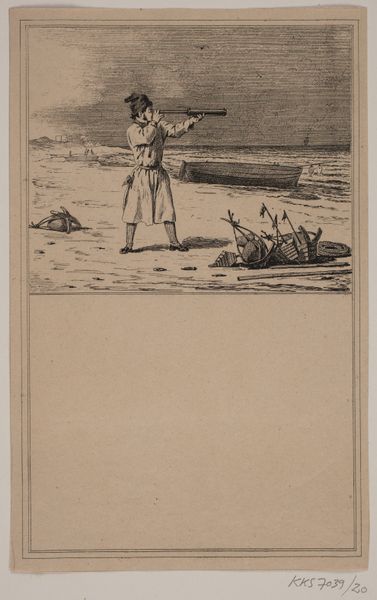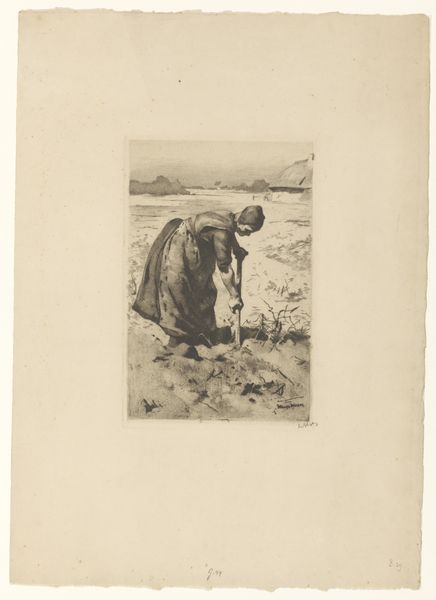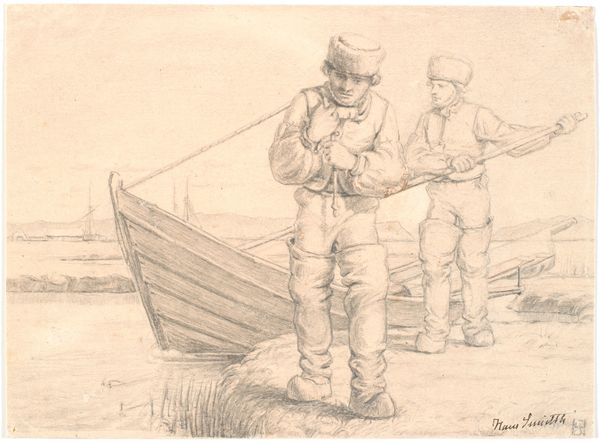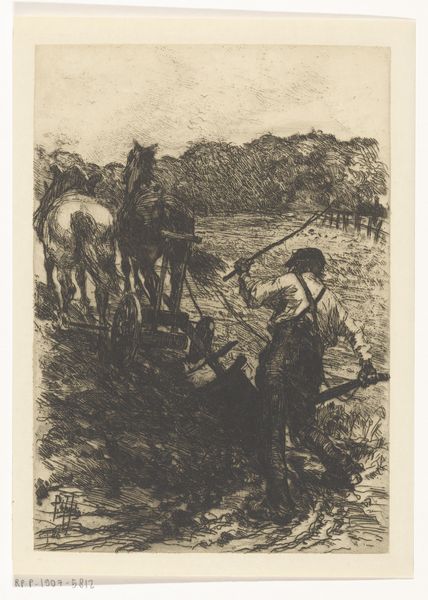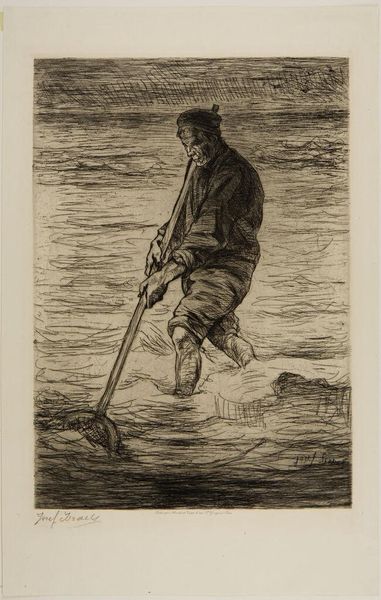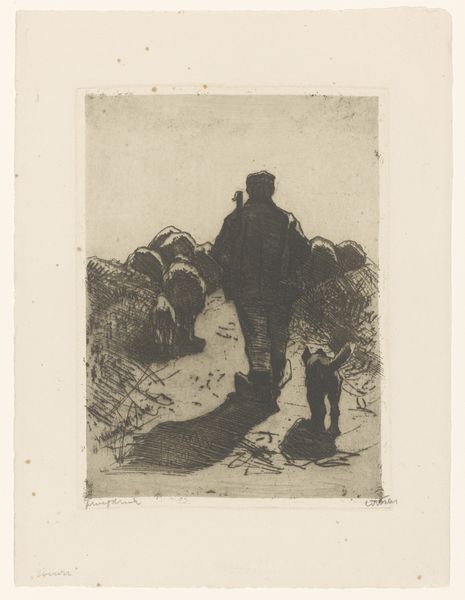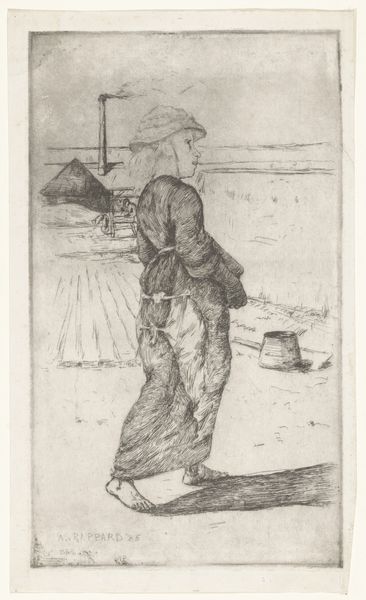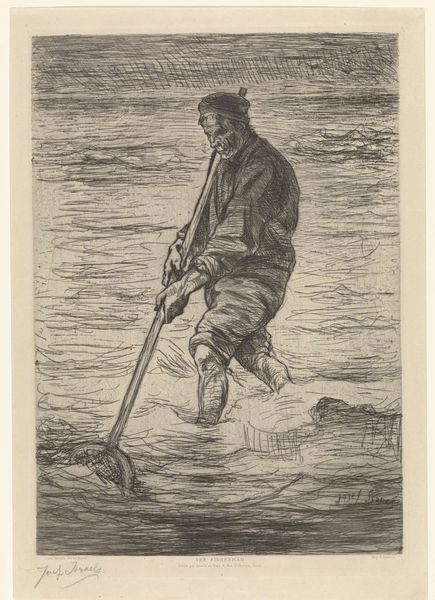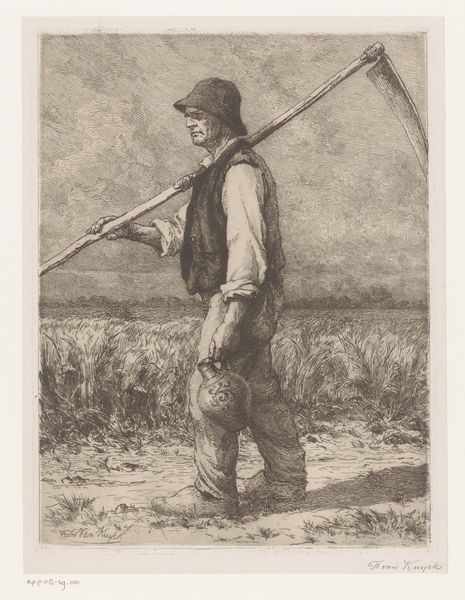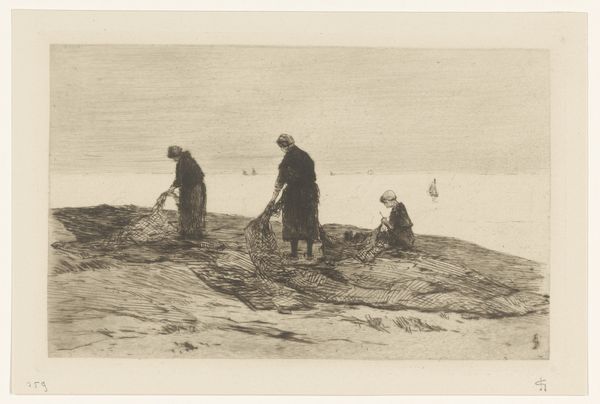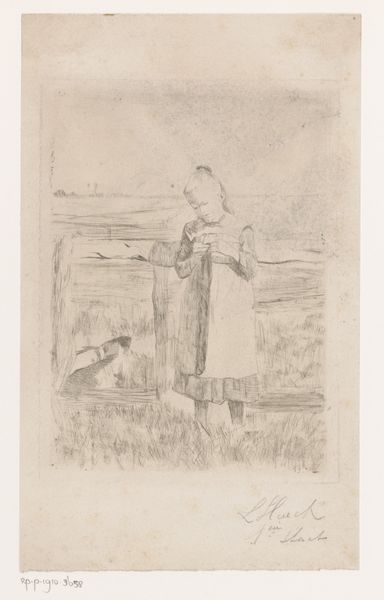
Dimensions: 205 × 150 mm (image/plate); 224 × 172 mm (sheet)
Copyright: Public Domain
Curator: Immediately, I notice a somber quality. The etching is predominantly dark, with these clustered, nervous lines giving a palpable sense of the density of the hay and a sky weighed down by cloud. Editor: We're looking at "Woman Haymaker at Éragny," a piece realized by Camille Pissarro in 1897. He returned to the rural setting of Éragny after a period of urban scenes, drawn to this image of agricultural labor. It’s an etching, so printed on paper. Curator: The focus on labor is interesting. Notice how the composition forces us to confront the repetitive, almost cyclical nature of the haymaking. Pissarro hasn’t romanticized this labor, but presented it with unflinching realism, showcasing the physical exertion. How does this intersect with gender dynamics? Editor: Exactly. The depiction of women engaged in this work speaks to the crucial role women played in agricultural societies. They're not idealized figures, but laborers whose efforts contributed to the economic backbone of their communities. It forces us to question traditional, often patriarchal, narratives about work and visibility. Who has historically had their labor erased? And how is art complicit or resistant in this process? Curator: And the medium itself—etching—becomes a point of emphasis. The network of lines almost mimics the patterns of the fields, emphasizing the laborious hand of both the farmer and the artist. What kind of acid was used to etch this image into metal? It's the corrosive quality that mirrors the toll agricultural work takes on the body. Editor: Consider the socioeconomic context; late 19th-century France was witnessing industrial transformations, shifting populations, and changes in agrarian life. Pissarro's turn towards rural subjects can be viewed as a political commentary. The painting resists the allure of industrial progress by acknowledging the toils and traditional practices of rural existence. Curator: I agree. He gives importance to what industrial capitalism so easily forgets, which allows the working class to reclaim their narrative through images of physical effort. Editor: Absolutely. This image speaks volumes about labor, gender, and visibility. The muted aesthetic invites contemplation of how power and representation have shifted through time. Curator: And prompts a discussion about labor conditions of rural, agricultural economies. This isn’t only aesthetic, but crucial to broader questions about land use and rural poverty. Editor: Food for thought, indeed.
Comments
No comments
Be the first to comment and join the conversation on the ultimate creative platform.
